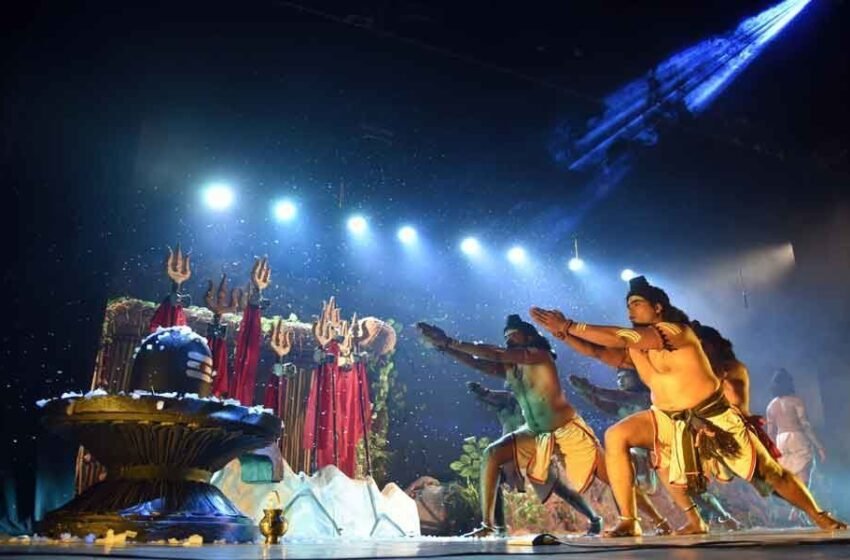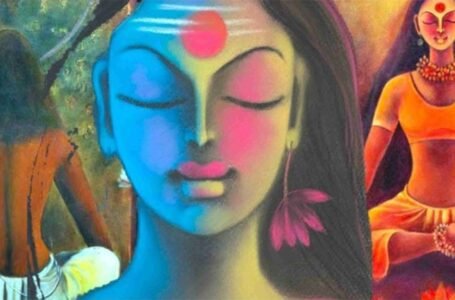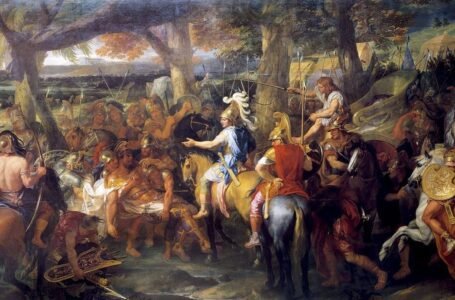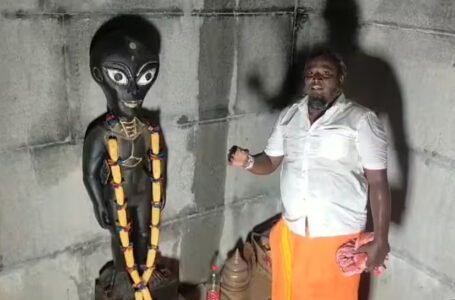Oggu Katha: The Art of Telecentric Narration in Telangana Folk Music

Oggu katha is the folk art that portrays traditions of legendary heroes and gods of Telangana mingling music, tales and dance movements. Part and parcel of the social and religious focalization of the South India, Oggu Katha is intended both for recreation and worship. However, because of its importance to the culture, this particular form of art is almost in the process of being eradicated, as fewer and fewer professionals undertake it. In order to analyze the shift in reception and general popularity of Oggu Katha, this article examines the background and cultural context of a performance, as well as its psychoanalytical potential.
The Pioneer of Oggu Katha
Oggu Katha has its origins with the Oggu community, who were the people traditionally responsible for the art form. Not much is know about the Oggus but it is widely believed that they are followers of Lord Shiva and Goddess Yellamma and most of their dances are dedicated to these deities. About the social life of Veerabhadra, Mallanna, and other folk heroes, the stories of Oggu Katha became popular. These stories are told by an Oggu Pujari, major characters, and minor characters; the Oggu Pujari performs music, especially percussive instruments such as the dhol and harmonium. The shows it is very engaging, acting, and sometimes compel the actors to dance, chant, or mimic something which many relates the audience with divinity.
Cultural Background and Significance
Oggu Katha was produced in a society that was mainly agricultural and culture was passed down from generation through word of mouth. The art form served as a filter between folklore, religion and maintained and molding culture and acceptable behavior. It was especially performed during festivals, temple occasion and fairs and thus became a common spiritual experience. They danced the rhythms and banged instruments, the aesthetic trappings of which not only enthralled the audiences but also offered moral, endurance and dedication instructions.
The psychoanalytical approach to Oggu Katha
The Collective Unconscious
Oggu Katha can be best explained using Carl Jung’s theory of the collective unconscious. These are such gods and heroes as for the people it is important to hear and think about something familiar and relevant and connect to the discourse of the culture. For example Veerabhadra: He is the form of Lord Shiva, who fights for the insult done to his wife Sati, rejection of injustice and anger is moral. These themes target the psychological complexes and achievements of the audience, giving emotion outlets and the entity that reflects the community’s ethic standards.
Freudian Analysis: Id, Ego, and Superego
Another theory associated with character and narrative interpretation is Sigmund Freud psycho analytical theory. In regards with the show procedures and plot twisted, the hasty steps of Veerabhadra could comment on the id, the ‘animal inside’. The values inherent in the stories concern the superego and introduce the proper conduct to the audience. The self is manifested through the intermediary of the performance itself and its rituals of the art form that are designed to exhibit socially acceptable degree of passion. Behavioral imitation and Social learning*
Therefore, it is easy for the audience to follow the teaching of Oggu Katha based on Bandura’s social learning theory. The portrayal of adventurous escapades and noble activities as a character in a story makes good reference for those considering emulation; children especially will emulate such conduct. For example using pro gekko analysis on the movie, scene that portrays Mallanna as a humble and dedicated man, makes the audience want to be humble and dedicated in their own lives.
Colonial Influence and Modernization
The decline of Oggu Katha can be traced back to the colonial era, when Western education and industrialization began to erode traditional practices. The advent of modern entertainment like cinema and television further marginalized this art form. Additionally, the migration of rural populations to urban areas disrupted the social structures that supported Oggu Katha.
Reasons for the Decline of Oggu Katha
- Urbanization and Migration: The migration of rural communities to cities has reduced the audience for traditional performances.
- Economic Challenges: The practitioners often face financial instability, as Oggu Katha does not provide a sustainable livelihood.
- Cultural Shift: The younger generation’s preference for modern entertainment has led to a decline in interest.
- Loss of Patronage: Traditional patrons, such as temple authorities and village elders, no longer actively support the art form.
- Lack of Institutional Support: Government and cultural organizations have done little to preserve and promote Oggu Katha. Colonial Influence and Modernization
The decline of Oggu Katha can be traced back to the colonial era, when Western education and industrialization began to erode traditional practices. The advent of modern entertainment like cinema and television further marginalized this art form. Additionally, the migration of rural populations to urban areas disrupted the social structures that supported Oggu Katha.
-Reasons for the Decline of Oggu Katha
- Urbanization and Migration: The migration of rural communities to cities has reduced the audience for traditional performances.
- Economic Challenges: The practitioners often face financial instability, as Oggu Katha does not provide a sustainable livelihood.
- Cultural Shift: The younger generation’s preference for modern entertainment has led to a decline in interest.
- Loss of Patronage: Traditional patrons, such as temple authorities and village elders, no longer actively support the art form.
- Lack of Institutional Support: Government and cultural organizations have done little to preserve and promote Oggu Katha.
Cultural and Historical Context
Rural Life and Spiritual Practices
Oggu Katha thrived in rural settings where community participation and collective rituals were central to daily life. The agrarian lifestyle fostered a close connection with nature and deities, making these stories relatable and significant. The performances often included offerings to the deities, reinforcing the community’s dependence on divine blessings for agricultural prosperity.
Colonial Influence and Modernization
The decline of Oggu Katha can be traced back to the colonial era, when Western education and industrialization began to erode traditional practices. The advent of modern entertainment like cinema and television further marginalized this art form. Additionally, the migration of rural populations to urban areas disrupted the social structures that supported Oggu Katha.
Reasons for the Decline of Oggu Katha
- Urbanization and Migration: The migration of rural communities to cities has reduced the audience for traditional performances.
- Economic Challenges: The practitioners often face financial instability, as Oggu Katha does not provide a sustainable livelihood.
- Cultural Shift: The younger generation’s preference for modern entertainment has led to a decline in interest.
- Loss of Patronage: Traditional patrons, such as temple authorities and village elders, no longer actively support the art form.
- Lack of Institutional Support: Government and cultural organizations have done little to preserve and promote Oggu Katha.
Live Examples and Impact on People -Connecting the Divine to Daily Life
In a village performance, an Oggu Katha about Mallanna’s devotion to Lord Shiva moved the audience to tears. The story’s emphasis on faith and perseverance resonated deeply with farmers facing drought, giving them hope and a renewed sense of purpose.
Symbolism in Costumes and Rituals
The vibrant costumes and symbolic gestures used in Oggu Katha represent deeper psychological and cultural meanings. For instance, the use of red in Veerabhadra’s story signifies both anger and protection, reflecting the dual nature of divine intervention.
Psychoanalytical Impact on Practitioners
The performers of Oggu Katha often find a sense of purpose and identity in their art. The act of narrating divine tales serves as a form of sublimation, channeling their personal struggles into a creative and spiritual outlet. The communal nature of the performances also provides emotional support and a sense of belonging.
Reviving Oggu Katha: Steps Forward
- Documentation and Archiving: Recording performances and creating digital archives can preserve the art form for future generations.
- Educational Integration: Introducing Oggu Katha in school curriculums can raise awareness among the youth.
- Financial Support: Providing grants and sponsorships to practitioners can make the art form economically viable.
- Cultural Festivals: Organizing festivals and competitions can rekindle interest in traditional storytelling.
- Media Promotion: Leveraging social media and digital platforms can bring Oggu Katha to a global audience.
Conclusion
Oggu Katha is more than just an art form; it is a repository of Telangana’s cultural and spiritual heritage. By understanding its psychoanalytical dimensions and addressing the reasons for its decline, we can work towards its revival. The stories of deities and heroes in Oggu Katha not only entertain but also inspire, offering timeless lessons in resilience, morality, and devotion. It is imperative to preserve this treasure for future generations, ensuring that the voices of the Oggu storytellers continue to echo through the ages.


